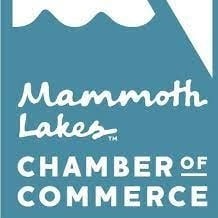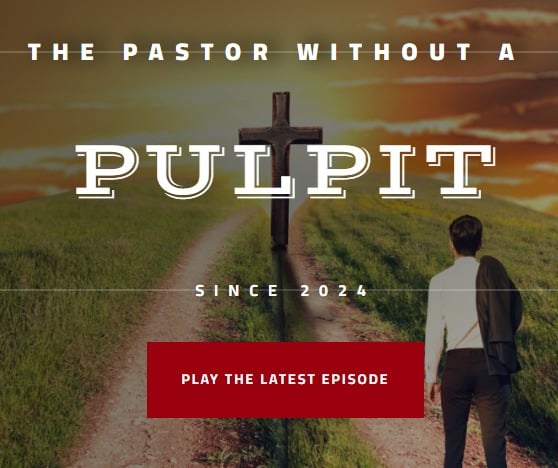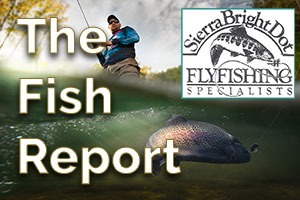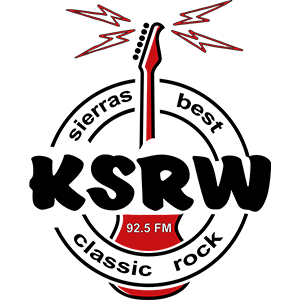Dear Editor,
 Cattle routinely graze in Inyo Federal Wilderness area, which are off limits to vehicles (often even on established roads). I walked an area above Cartago today that was otherwise pristine but for havoc wreaked by cloven hoofs on the delicate protective crust of Owens Valley floor and slopes.
Cattle routinely graze in Inyo Federal Wilderness area, which are off limits to vehicles (often even on established roads). I walked an area above Cartago today that was otherwise pristine but for havoc wreaked by cloven hoofs on the delicate protective crust of Owens Valley floor and slopes.
Yesterday, I walked to the nearby Cartago Springs wetlands, also publicly owned (State of California) and it too is occupied by cattle (almost certainly without permit). Some Fish and Game people who manage the site think it should be the first place tourists from the south visit in Owens Valley, but it’s nothing to send a postcard home about with its deep hoof prints and signature plops of manure.
It’s difficult to image anything worse for the public ecosystem that heavy hoofed, methane-laced dung generators, otherwise known as someone’s beef-for-profit.
According to this article: http://www.mikehudak.com/Articles/Chesapeake9909.html,
“Livestock’s impact on the number of endangered species is approximately equal to that of logging and mining combined: 22% impacted by livestock, compared to 12% by logging, and 11% by mining.
Contrary to common thought western public lands do not supply a significant amount of U.S. beef. With regard to the 48 contiguous states, forage on western public lands accounts for only 2% of the total feed consumed by beef cattle, while beef cattle producers with federal permits represent only about 3% of the U.S. total. Even as a contribution to the economies of the eleven western states, public lands ranching is insignificant: providing only 0.06% of the jobs, and 0.04% of the income.”
And since the rule of the range is that cattle may gaze anywhere that is not fenced off, who knows how must destruction is wrought by future hamburgers without any compensation at all to taxpayer and citizens.
Similarly, land allegedly preserved in a natural state through DWP ownership is routinely leased for grazing. Some of the rarest and most fantastic locations in the Alabama Hills are desecrated by beef, and the ‘restored’ lower Owens River area has been increasingly trampled since the reluctant return of some water by DWP.
Have a cherished source of watercress from an Owens Valley spring or waterway? Not so quick, for parasitic liver flukes that cattle host, encyst on watercress. If humans ingest these larvae, they too can get infected.
While Owens Valley residents may associate this place with romanticized Hollywood images of cowboys, the truth is that it is outdoors enthusiasts that stave off the specter of complete economic apocalypse here. And it’s hard to imagine nature lovers loving the sight of muddy trampled stream banks, or cow paddies and their associated annoying insect populations.
Perhaps it’s time to tell the government hands that took away the people’s land to keep the cows off?
Scott Palamar
Discover more from Sierra Wave: Eastern Sierra News - The Community's News
Subscribe to get the latest posts sent to your email.





















Hey People like to see the cows on the side of the road and the occasional wrangler riding in the dust. Thats what people come up here for
Ron – I know some girls that come up to see the wranglers.. hee yaa!
Well, we better keep those decorative cows and cowboys on the side of the road, because the folks in their cars are sure not going to see them in the Sierra meadows…..
Pretty soon tree huggers are going to be the only thing allowed on our “public land”.
J.H……The public can go wherever they want to on THEIR public land…..What the “tree-huggers” object to is those that feel the need to open up every square mile of land to allow vehicle access.
Wayne – the tree-huggers aren’t happy with where vehicles are currently allowed. They want to take away our rights to lands that are currently open. Which is much different then opening up every square mile of land that is currently closed.
I’m an avid off roader but I would be apposed to opening up any area that is currently closed to vehicles. I’m also apposed to closing any land that is currently open to vehicles.
Hate to say it, but I have to agree with Rob on this one. They’re closing down roads left and right. The thing to remember, is that not everyone can just get out and hike 5 or 10 miles to a place they like to go. Some people don’t have the physical ability for it. I’m not referring to flabby couch sitters, but the folks who refuse to become such as a result of their disability. To run around creating new roads is absurd, but to close the existing ones is foolish as well.
Bob, I don’t know a lot of folks that are going to ride a cow to get there!
Ken, my point was addressing vehicle access and the closing of existing roads. Although it is slightly off topic to the main article, it is an issue that is near and dear to myself and others, on both sides of the equation. More debate, and information exchanged is a necessity to informed decision making. Moderation and middle ground is what made our country great, and is currently happily being cast aside in favor of reactionary arguments with partial or made-up facts being strewn carelessly about. Forums such as this can be useful in communicating with “the other side”, no matter what side you are on.
Do you really think making absolutists statements about “tree huggers” is a realistic, intelligent, or articulate approach to such a complex issue?
Hmmm. Unclaimed property on public lands?? You like steaks?
Scott-
I have found local ranchers to be approachable and friendly. I would suggest that when you find an area that is being mismanaged a call be made to the rancher to inquire about it. They would also probablly like to know about the dead calf too. Most leases on DWP and federal lands in this area are longterm thus the cattle operators have a vested interest in seeing the land viable for grazing for years or even generations to come. If a call to the rancher about perceived ecological degredation goes unanswered then a call to the range management personnel of DWP might be justified.
John-
Thank for the input on this matter. I have conversed with local beef farmers before and once even tracked down the owner of an injured cow near my property. Based on my wanderings however, I’d say the matter of cattle trampling the landscape is too widespread to note an issue here and there. It seems nowhere up the valley escapes the seasonal unloading of cows to scour whatever greenery there is. I own two Open Space-zoned parcels and have seen cattle or their calling cards on numerous occasions. Another nearby OS landowner told me it used to be a common courtesy of beef framers to offer some compensation for allowing their product to encroach.
In this arid and sandy environment, disturbance to the soil and to the flora does not heal very well. The upside is you can 4WD mining roads scraped out 100 years ago (try that on the west side of the Sierra). The downside is the cow pile plopped 5 years ago is still there, and the cow crushed buckwheat. shadscale, and ephedra may not have fully recovered. The notion that cattle trampling of native Owen Valley scrub is good for it is rather preposterous, as is the healthy reduction of fire tinder.
There are good ways and bad ways to do anything. The good way to grow beef is on a fenced property owned or leased for the purpose. I admire the DWP property east of 395, north of 190- it’s a classic western scene, but it’s fenced and irrigated. Cattle dumped off anywhere on the open range- private, public wilderness, BLM, DWP, whatever- is where they inflict big time damage for so little nourishment.
DWP, which is not a private company but a department of the municipality of Los Angeles, is happy to lease their holdings most anywhere for grazing, and as far as I can tell exercise no discretion for what might constitute a sensitive environment. And if they do, it’s most likely that someone made them do it.
I have found over and over in the 35 years as an explorer and 7 years as a property owner in Owens Valley, that if you do not fight for a good environment, good economy, and good government here, it will not be granted to you.
-Scott
John- Speaking of contacting beef herders, back up above Cartago on Saturday I came upon a lone independent-looking cow with a large udder and set of horns. I don’t know if cattle crews return for stragglers, but perhaps a supporter reading this could let them know. An idea occurs to me that would help in such a situation- if folks dropping off the animals posted their permit at access points, it would make it simpler for someone to report lost or distressed cows.-Scott
Mr. Barton, I agree we should end all taxpayer funded freebies to everyone. If steak costs $50/pound we’ll either pay it or eat something else. Mr. Palamar referred specifically to “DWP holdings”.
Another thing some people might be unaware of, if you hit a cow with your vehicle, or one enters your property from open range and hurts itself, guess what, you owe the rancher money!
No offense meant to the ranchers, vegetarians, tree-huggers, off-roaders, carnivores, or free-thinkers I know!
Interesting point Joan… I might point out that hitting a cow in your car, or said cow injuring itself on your property depends heavily upon where you live. Unless an area is designated as “Open Range” the owner of the offending livestock is responsible for keeping it contained. If said area is designated as “Open Range” then everyone who does not want the stock on their land must fence it out.
Grazing on DWP land is not technically grazing on “public lands”, and DWP has a different formula for how many animals can be on a specific area of land. Are you talking about DWP or Federal Lands? DWP is a private landowner.
Mr. Palamar, I think it comes down to what bugs the heck out of you doesn’t bother other people, and vice-versa. Personally, I’m not a giant fan of grazing, but I’m not an elitist either who thinks that I should force others to do everything my way. I’ve been spending quite a bit of time in the hills above Independence recently and have seen cattle and their spoor around. I keep an eye on the wildflowers and can’t say that I have seen any wiped out or even really damaged by the cattle, of course that is a function of the density of the cattle, the amount of forage, etc. I agree that especially sensitive wetlands and other botanically sensitive areas should be excluded from cattle
Washing and cooking your watercress should prevent liver flukes. You shouldn’t eat anything raw out of a stream without washing it in clean water. You can get giardia or E.coli among other things, with or without cow poop. Speaking of poop, marmots are pretty filthy. They are known to clean out the bottoms of outhouses during the winter, and they’re native.
Joann-
I specifically referred to BLM and FS, not DWP because tax payers are generally not on the line with management of private lands. Environmental degredation is one issue but the financial deficits of western public lands grazing is not publicized or well known. There can still be a cattle industry on public lands employing locals etc but it should come at no additional cost to the US Treasury, ie. you and me.
Much of what Scott writes is correct and well documented. We have fallen in love with the cowboy myth. What Scott doesn’t point out is the fiscal impact to the taxpayer who pays for the BLM and Forest Service range management personnel, and laborers who repair areas degraded by overgrazing, install signs, cattle guards etc.. The cattle operators who lease our land come no where close to repaying the costs to manage the land, thus the term “welfare ranching”. The AUM rate charged by the Feds needs to increase dramatically.
You’re correct, Barton. By manipulating the agenda driven reporting and placing it on paper, it is therefore ‘documented’. Erroneous documentation is still ‘documentation’, is it not? Arguing with facts is futile since the “anti’s” will only believe that which is told to them by other anti’s.
In Central California, grazing was removed from some areas of seasonal wetlands. Native plants and animals lived there, some of which are “endangered.” Within as little as three years, non-native weeds took over and the native plants were displaced. When grazing was resumed, the rare plants and animals returned.
Belly up to the bar for another shot of Kool-Aid.
It’s not the ranchers fault the forest service or blm can’t effectively manage the land at a reasonable cost. The FEDs are famous for not doing anything cost effectively, and the public isn’t going to put up with it any longer. It doesn’t matter if their managing grazing, logging or wind farms, it’s the forest service and blm we taxpayers are not getting our monies worth from. And it’s sickening that they’re only answer is to increase the AUM rate.
Wow, I am impressed at the quantity and consistency of responses to my ‘food for thought.’
I live up here because of the free access to vast wide open natural spaces made possible by non-private ownership. And I can sadly report that the lushest easily accessible spots are commonly trampled by cattle. Try walking the DWP holdings between Horseshoe Meadows and Tuttle Creek Roads; this world class nature between “Frog Spring” and the” Sandstone Arch” is compromised by cattle activity.
I just revisited the area mentioned in my letter only to find a rotting carcass of a calf, surrounded by broken brush and manure piles (www.cartagolanding.com/photos/IMG_9413axl.JPG) . And I was surprised to come across an unnamed seasonal stream due probably to our abundant rainfall this season. I got out to explore it and guess what? Yep, the usual trampled banks, etc.
I have heard it directly from the mouth of a prominent rancher in the area that most of the ‘open range’ here offers slim pickings to his cattle. So why bother? I guess because it’s cheap or free to do it.
There is a principal at play up here called the Greater Good. DWP was allowed to take Owens River and still gets to keep it because watering the City of Los Angeles is a Greater Good than having it flow freely to its natural destination. 98% of Inyo County is denied to enterprising private hands for the Greater Good. Well, the same principal applies to cattle grazing on public land: is the Greater Good a few beef farmers, or the protection of nature and its appreciation by outdoors enthusiasts who actually keep the Valley from economic collapse?
I have heard the same one-sided arguments made when criticizing DWP for its imperialist behavior- If it wasn’t ‘t for DWP Owens Valley would be Fresno; DWP provides jobs; If you don’t like things the way they are here, then move back to LA.
In the meantime, y’all casually watch Owens Valley slowly become one with the dust. If you really appreciate the compromising of the environment as stated, then why don’t YOU move back to LA, where you can really enjoy it?
PS: I do not own an ATV or dirt bike, and I drive my 1985 truck on designated roadways.
sounds like another do gooder who’s going to save the planet all by himself, even if that means getting all the ranchers who have lived here in the valley for generations to stop earning a living, not just earning a living but a way of life. and whats with the atv bashing, I have lived here in lone pine pretty much all my life. born in lone pine in 1964. I have been riding dirt bikes since I was 12 and dont leave trash and beer bottles everywhere I go,and neither do my friends. I treat the land with respect ,and enjoy riding all over the valley, from casa diablo north of bishop to olancha. I know many ranchers in the valley including the rancher whose cows were probably the ones above cartago. they are good honest hard working people who made a living thru hard work and determination. when I hear people talking about changing the lifestyle of the locals to fit their greedy, selfish wants and sierra club attitudes I just want to send them packing out of the valley and back to L.A.
salblaster….I’m glad your not one to be leaving trash and beer bottles around the hills and trails when your riding your ATV,and I’m sure most locals respect our area the same way you do(I live in Lone Pine too)…But the same can’t be said about many out-of-area visitors to the Alabamas,Diaz Lake,the Inyos,and local campgrounds…That was my point to Mr.Palamars letter…I think what he was trying to object to is how come people don’t have free-reign to every square inch of land to do as they please,as far as vehicle use goes,and the cattle are allowed to roam free to do more damage with their ‘methane-laced” dung,and hoof prints.As far as your assessment of the “greedy,selfish wants of the Sierra Club”,most members,including myself,don’t object to cattle grazing on our lands…but do kind of hope our scenic areas don’t end up looking like Jawbone Canyon south of Ridgecrest,where over-use by ATV’s,motorcycles,dunebuggies,etc.have turned that part of the desert into a barren wasteland.
Thank You, Daris! +10
I am fed up with persons who love our rural way of life, move here, and then try to change it. If you don’t like the way our area (Eastern Sierras) have been managed for hundreds of years then leave. The majority of ranchers, packers, and outdoors men do a damn good job of taking good care of the lands in Inyo and Mono counties.
Hurrah for Daris!
I would rather have a cow for a neighbor than 90% of the people I’ve met.
How about neither as a neighbor?
American Ranching families do have access to preferred lands to graze their cattle. These lands are more suitable and are without controversy.
With American ranchers such as in California being subsidized by the government it does no favors to American public land, the international markets, other grazing lands and smaller producers such as in Mexico.
The subsidization creates in part a false market.
To pay less in fees to graze more cattle pumps up the market with more animals. This falsifies competition which brings down international market prices.
American cattlemen get their prices, international producers don’t! The American cattleman pay less to graze- he’s subsidized by the Government!
International producers have to graze more to compete with this subsidization.
This is bad for all land paradigms, international competiton and it only suits the American rancher as they continually graze public lands for pennies on the dollar.
Its sentimental history to let American ranchers Grazing rights stand in there current form.
Its a form of government subsidization. Its a form of socialism period!
Now this would normally not be bothersome but ranchers usually decry socialism,
unless it benefits them. Its hypocrisy!
The local rancher cries out his family has been ranching there since the early 1900s. Hey sir the fish have been there for centuries. First it was removal of the native Americans, then the wolves now maybe its your turn.
I realize that local ranchers create a buffer for pristine areas from developers and non wanted off roaders so there is a dilemma here.
Creating community based grass banks on private lands can be part of the solution. Yet an across the board solution needs to come from within the community.
I strongly believe that no more subsidization for ranchers should be allowed on public lands. If so than the rancher needs to pay a fair market price for the public land.
Keep special lands open and free they belong to everyone!
I think you’re a bit off base here Rube. Firstly, American cattlemen don’t recieve the same sort of subsidies farmers do. As it turns out, nearly all of the “subsidies” you speak of are basically insurance against natural disasters of one sort or another. So the only way these cattlemen get any money, is if a bunch of their cows die (from a natural disaster), or for feed or pasture losses (stemming from a natural disaster). So when you look at that handy little bar graph showing occasional years of massive spending, it should correspond nicely with one or more natural disasters causing those losses.
Granted, in years past, when the USDA would literally mow down acres upon acres of brushland, and plant crested wheat (or some other fodder more suited to livestock than wildlife) that was terrible forest management. But things have changed. So far as it being “sentimental history” to continue to allow American ranchers to graze, that’s foolishness. Cattle and sheep have been grazing out here for over 150 years. So far, that doesn’t seem to have ruined much. And, it allows land elsewhere to be used for other things. We are far better off having cattle graze areas that are also popular for hunting, fishing, hiking, camping, and also support a viable wild ecosystem than clearing land for feedlots, and having to grow fodder elsewhere. This depletes resources needlessly. Ranchers also make sure there is water available where they have stock, and that’s good for wildlife.
Finally, although community grass banks are conceptually a great idea, they aren’t feasible here, as the VAST majority of private land is owned by LADWP. And at the end of the day, people really like to enjoy that land too.
Nobody likes to step in cow poop when they’re out hiking, but in this case, I think the better solution might be to watch where you put your feet.
P.S. It doesn’t hurt my feelings whatsoever that American cattlemen have a leg up on foreigners. I’m all about fair economics, but nobody else seems to care (China, and software patents for example), and we should look out for our own people at least once in awhile.
We do not exist for the outdoor pleasure of some cone head who doesn’t understand. Should I complain about how the millions of vehicles on the road completely destroyed the pristine wilderness where LA is now. Cattle are our history, Many, many times over the years I have been stuck in a herd of sheep or cattle. It is a part of where I live, where I have alway’s lived and where I will remain. IF YOU DON’T LIKE OUR COWS, THEIR POOP OR THEIR SMELL, THEN STAY HOME In your beautiful smog filled, crime infested cities and leave us to our hooved friends who may fart, but they dont hurt anyone
Home girl….GREAT POST!!!!!!….Back in 1984,on my honeymoon,when me and my wife were coming back from Bodie,the back way,on Conway Ranch Road,we were stopped by a large herd of cattle blocking our path…and thought how neat that was…..Can’t you just see that happening to Scott Palamar,the man that wrote this letter,and how angry it would make him….yelling,waving his arms,cussing,and then ,when the road was finally clear to pass,getting upset when he had to drive over the “methan-laced”dung left by the herd…You said it perfectly,if you don’t like the cattle,go back to the big city!!!
Well said. Also, some grazing is beneficial to natural ecosystems because they developed along with grazing animals.
In 2008, local rancher Ron Yribarren, was subjected to similar grazing prejudices due to a fungus that was killing the yellow-legged frogs. After a fiscal impact known only to Mr. Yribarren, it was found that the fungus was a naturally occurring event in the area and not attributed to the cattle at all. Much was made over the cattle, the fungus, and the demise of this frog and at the expense to Mr. Yribarren’s operation. Yet when it was found the fungus was natural to the area, this revelation went almost unnoticed in the manner it was reported in comparison to the articles that had Mr. Yribarren and the cattle judged prior to the evidence being analyzed and proven it was not related to the cattle in any manner. Palamar continues the diatribe of the environmental left. Still, no apology for anything that the entity’s put Mr. Yribarren through were ever revealed. He was forced to bear the brunt of agenda driven ideology.
Palamar puts up the same rhetorical arguments that been proven unfounded for many years. Not a surprise that Hudek, who is listed as a source by Palamar, appears to be associated with RangeNet as well as the Sierra Club.
Cattle serve an important industry for the valley, the nation, and for the health of the areas that they graze in. Areas that have been denied grazing turn desolate and invasive plants are encouraged to grow, that is if anything grows without the importance of the compacted soil being loosened by cloven hooves. A fact Palamar does not recognize. Concrete too helps seal in the soil and creates a nice “crust” where nothing will grow. Fire issues are also a concern in the area and grazing cuts down on the fuel available where overgrown with unwanted vegetation would increase the fire concern.
This is a response to the same issues (verbatim) as described by Palamar in the Spring 2001 issue of Range Magazine: Response to RangeNet, By Ed Depaoli, rancher and former area manager, BLM http://rangemagazine.com/archives/stories/spring01/response_to_rangenet.htm
It appears that Palamar is merely regurgitating the environmental agenda driven diatribe that he has been spoon fed without any realistic education of his own. Pay close attention to the points in the link and those regurgitated by Palamar with his desire to misinform and mislead the general, unaware public. Issues 5-16 show that this is a mere agenda driven post with no basis in fact by Palamar.
I was once on my horse at a working ranch competition when ‘we’ were approached by a lovely lady wearing leather shoes, belt, and purse. As she patted my horse she said to it, “be glad you’re not a cow.” She then turned to her group and said, “Where are we going for lunch? I saw I nice hamburger stand down the road.”
Remember, even an alleged “environmentalist” will mow their lawn for the health and maintenance of the grasses and surrounding plants.
In short, when you attempt to discredit the rancher and farmer with the usual incomplete, incorrect, and intentional rhetorical environmental leftist disinformation, be polite by not speaking with your mouthful
LP
Scott Palamar..In reality,what your letter is trying to say is to why cattle are allowed on the land that people are not legally allowed to destroy with their ATV’s and other vehicles.And do you,or anyone else really believe the Mike Hudak.com article saying cattle,and their ‘”methane-laced” dung pose more of a threat to endangered species than miming or logging operations?..Come on…Later,in your letter,you state the Alabama Hills are being desecrated by cattle,and their grazing.When I go on my walks with my dog in those Alabama Hills,I much rather be dodging those few and far between dung piles left by the cattle,than having to avoid the rude and loud ,obnoxious packs of off-roaders off the trails and breaking the law by doing so,and then ,later on,having to bag up their beer bottles and trash they leave behind for the locals to clean up.
and put a few hundred people out of work in the process. Just what we need more unemployement.